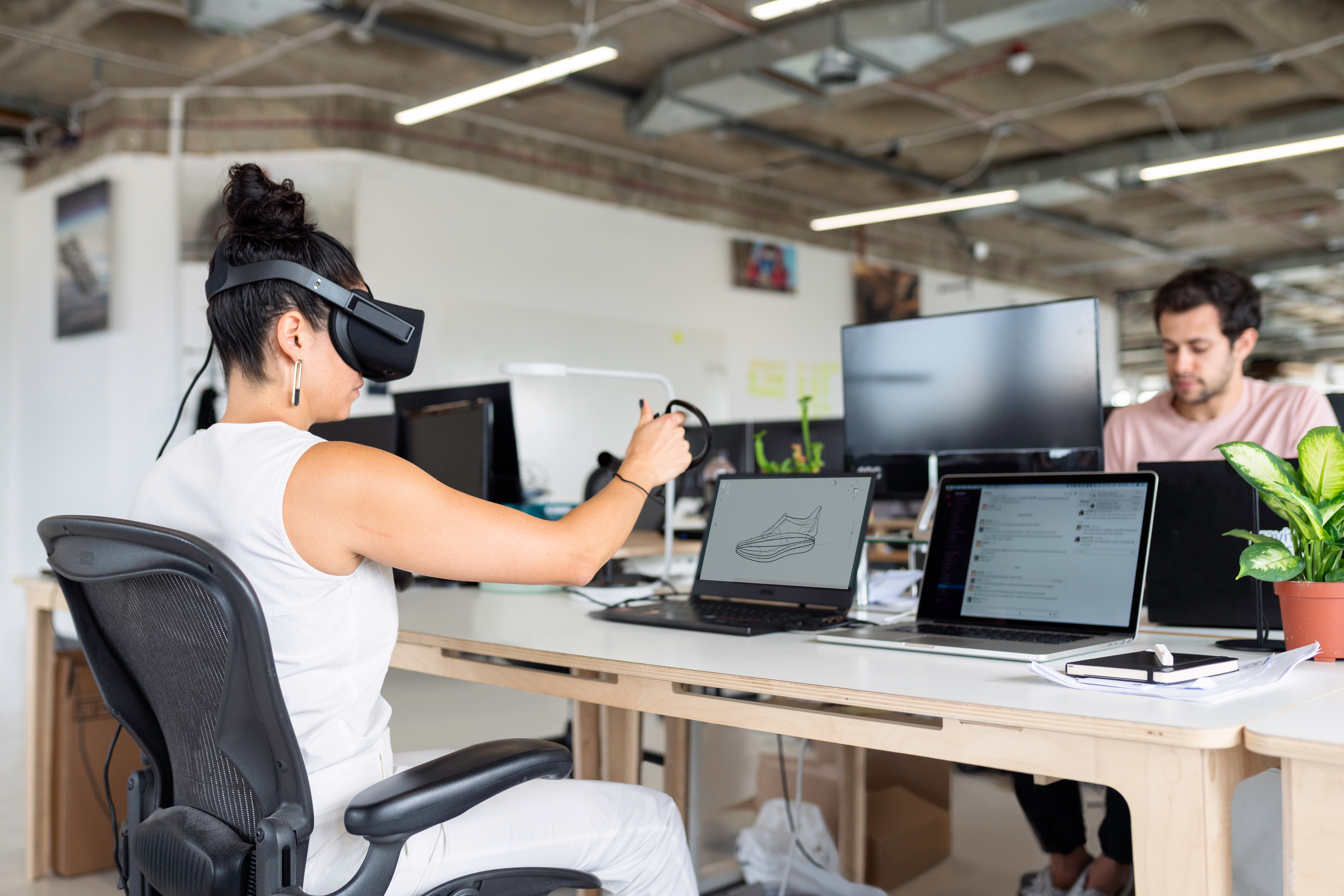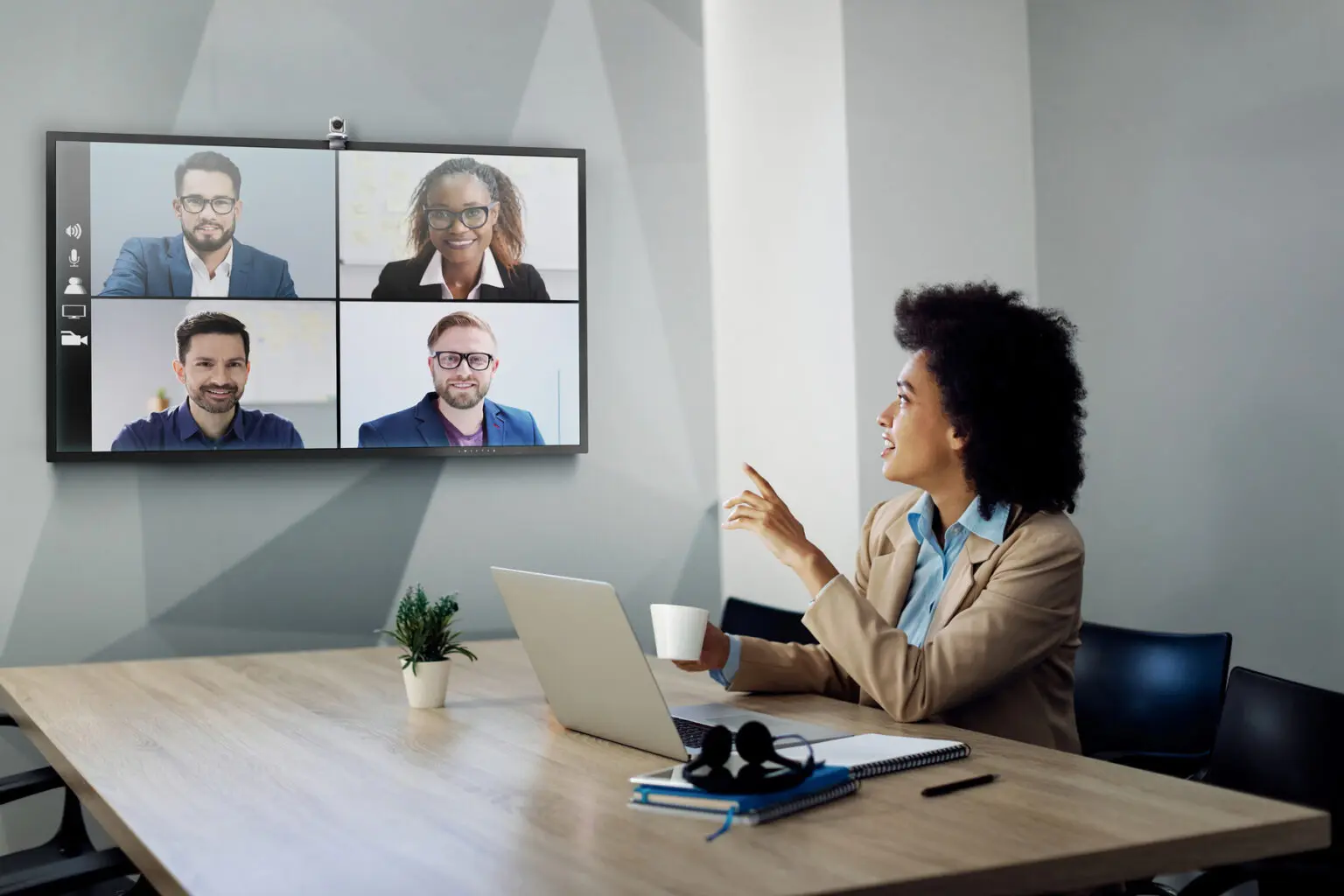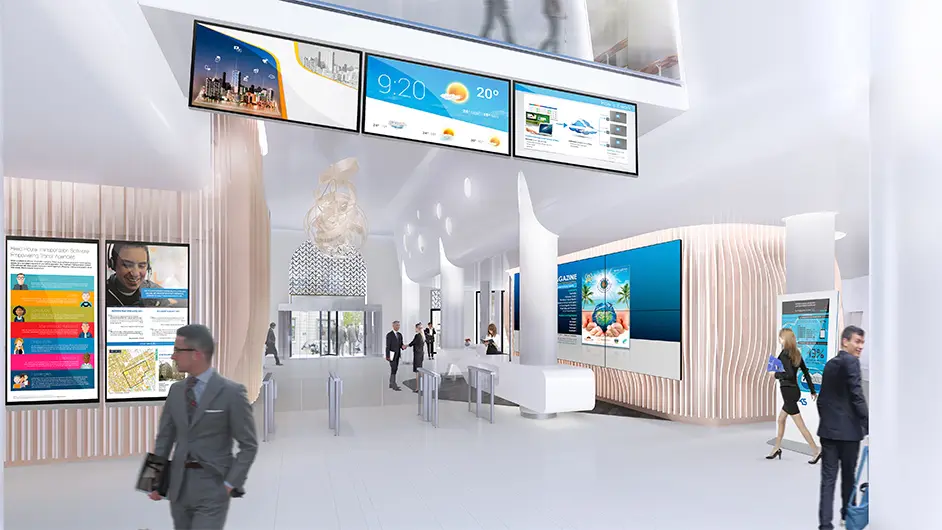The renewed interest in augmented reality (AR) and virtual reality (VR) within enterprises seems to promise the ability to transform the “business-as-usual” landscape. These once-futuristic technologies are now gaining practical momentum and driving innovation across industries with multiple use-cases and application scenarios blossoming. In fact, according to Statista, the number of users leveraging AR and VR will reach 2,593 million by 2027.
Apple’s recent announcement of the mixed-reality headset Vision Pro is a testament to the growing prominence of these immersive technologies. Of course, this has only spurred on the organisational sector that is increasingly exploring the AR and VR space.
So, in this article, let’s look at the various use cases, application areas, and potential benefits of AR/VR in enterprises. And let’s acknowledge the audio visual solutions that are a crucial enabler of this powerful technology.
Use-Cases of AR/VR in Enterprises
Training and Skill Development
AR/VR technologies provide a realistic and immersive training environment for employees to practice complex tasks. For example, in the aviation industry, pilots can undergo flight simulations using AR/VR to enhance their skills and experience different scenarios without any real-world risks. Likewise, in the healthcare sector, surgeons can practice intricate procedures in a virtual setting, allowing them to refine their techniques and enhance patient safety.
Remote Collaboration and Communication
With the use of AR/VR solutions, participants can collaborate and interact as if they were present in the same room. In fact, teams can accommodate real-time collaboration in shared virtual spaces, fostering effective communication and teamwork.
Product Design and Visualisation
AR/VR tools empower designers to create interactive and realistic prototypes and 3D models. They can help visualise and iterate product designs, allowing for faster and more accurate feedback and reducing the need for physical prototypes.
Also, enterprises can provide virtual product demonstrations to potential customers. The immersive experience allows customers to interact with products virtually, visualise how they fit into their environment, and make informed purchasing decisions.
Maintenance and Repair
Technicians can access real-time information overlaid on physical equipment to improve efficiency and accuracy in identifying and resolving issues. The AR/VR solutions can, in fact, offer guided instructions and augmented troubleshooting for maintenance and repair tasks.
This way, AR/VR can facilitate remote assistance by enabling experts to provide guidance and support remotely. Technicians on-site can receive real-time instructions and annotations from experts located elsewhere, reducing downtime and improving maintenance processes.
More Application Areas of AR/VR in Enterprises
Manufacturing and Industrial Setups
The application of AR/VR in manufacturing and industrial operations comes to the fore in visualising assembly processes — offering real-time guidance and overlaying digital information on physical objects. This enhances efficiency, reduces errors, and boosts productivity.
In fact, a PwC survey reveals that over one-third of US manufacturers either use or plan to use VR technology in the next three years. Similarly, a significant number of manufacturers have adoption plans for AR technology. In India, the AR/VR market is expected to grow at a whopping CAGR of 38% by 2027 — with the manufacturing sector being one of the biggest application areas.
Healthcare and Medical Training
The global AR/VR in healthcare market is projected to grow at a CAGR of 18.8% between 2023 and 2030. This isn’t surprising when we consider that AR/VR revolutionises medical training with immersive simulations for surgeons, medical students, and healthcare professionals. It enhances skills, improves patient outcomes, and provides invaluable training experiences.
Retail and E-commerce
AR/VR has revolutionised retail and e-commerce — truly transforming how customers shop. Through these solutions, customers can try out products from the comfort of their homes and make informed purchasing decisions. This helps e-commerce firms expand product ranges, increase engagement, and personalise shopping journeys.
AV Integration: Enhancing Immersive AR and VR Experiences
AR/VR has revolutionised sectors like retail and e-commerce — truly transforming how customers shop. Through these solutions, customers can try out products from the comfort of their homes and make informed purchasing decisions. This helps e-commerce firms expand product ranges, increase engagement, and personalise shopping journeys.
AV Integration: Enhancing Immersive AR and VR Experiences
Headsets alone may not provide the desired user-friendliness and functionality for healthcare, education, and other applications. Proper audiovisual (AV) integration is crucial for achieving genuinely immersive experiences. But it’s noteworthy that this integration will have to change from the traditional AV setup to an AR-enabled one, especially for industrial applications. Simply put, one will have to:
- Make the right selection when it comes to equipment like monitors, projectors, and software products
- Clearly understand the scope and specifications of the equipment, as well as how they are being utilised
- Get a holistic view of the existing facility through a detailed assessment
- Ensure that AV installations are in line with the AR/VR use cases that the brand wants to implement
The traditional AV installations and the associated technology will no longer suffice — since they won’t be able to support the performance, versatility, and functional requirements of many AR/VR applications. This is where the importance of collaborating with an expert AV integration partner like Resurgent comes into play.
At Resurgent, we’re experienced in creating customised cutting-edge AV solution designed for enterprise applicability. Our expertise allows us to extend these to integrated with AR/VR solutions that are tailored to project specifications. From unified communication systems to cutting-edge boardrooms and immersive experience centres to interactive training rooms, our solutions transcend traditional communication barriers, connecting teams across locations and devices.
We understand the importance of a human-centric approach, ensuring that technology serves as an enabler rather than a barrier. Our expertise lies in creating seamless audiovisual experiences that enhance collaboration and engagement. Connect with us to learn more about how we can help you with a concrete AR/VR strategy and implementation.



